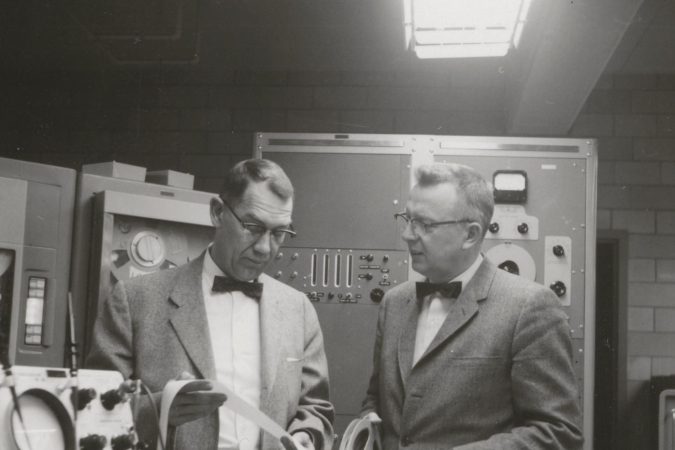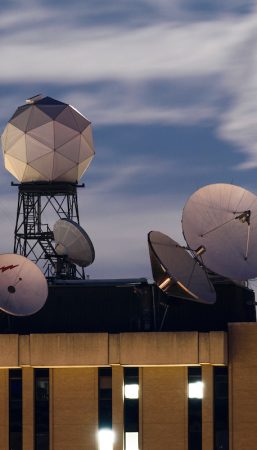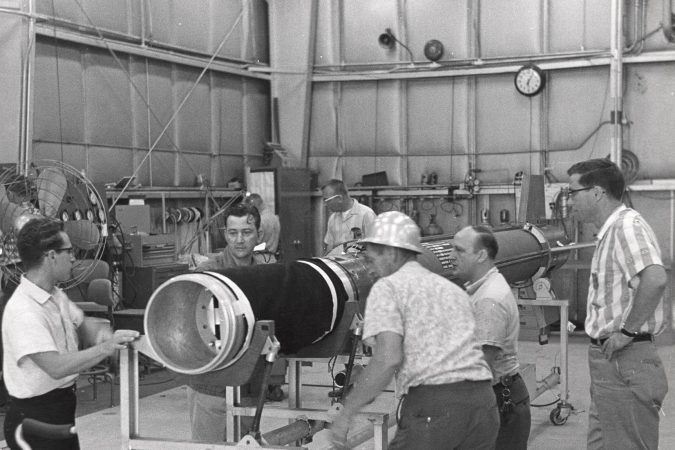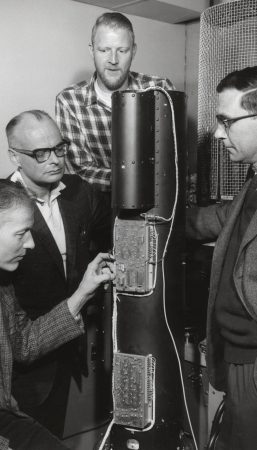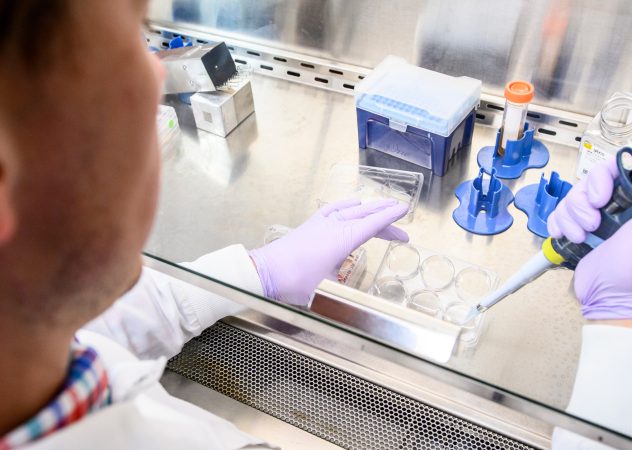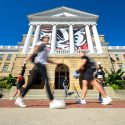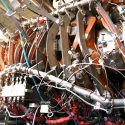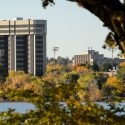UW’s 175th: Five ways UW–Madison ideas have changed the world
The world has changed a lot in the 175 years since the founding of the University of Wisconsin. Some history-changing ideas that continue to reverberate around the globe got their start right here on the University of Wisconsin–Madison campus.
From hospital operating rooms to deep space, here are just a few of the many ways UW–Madison innovations have changed the world.
Weather satellites
Modern weather satellites, with their sophisticated instruments and high-powered cameras, provide crucial information that helps us prepare for and understand everything from hurricanes to droughts. These satellites are also descendants of a scientific endeavor born at UW–Madison.
In the late 1950s, UW professors Vernor Suomi, a meteorologist, and Robert Parent, an engineer, led the design and fabrication of an instrument to measure Earth’s radiation balance. Launched in 1959 aboard the Explorer VII satellite, the instrument became the basis of history’s first successful meteorological experiment from space.
Suomi and Parent went on in the 1960s to invent the spin-scan cloud camera, which launched onboard ATS-I, the first geostationary satellite. The innovation forever changed meteorology by giving scientists an unprecedented timelapse view into the dynamics of the atmosphere.
Suomi helmed UW’s Space Science Engineering Center for many years after its founding in 1965 and has since come to be considered the scientific father of the weather satellite.
Over the decades since their introduction, weather satellites have improved with technological advancements in remote sensing and forecast modeling and have helped save countless lives from dangerous weather.
Meanwhile ongoing research at UW and other institutions is aimed at optimizing the use of current weather satellites and improving the capabilities of future ones, and UW scientists are among some of the leading experts in the field.
For instance, Tracey Holloway, a professor at the Nelson Institute for Environmental Studies and the Department of Atmospheric and Oceanic Sciences, is playing an important role in using satellite data to improve air quality and public heath.
Social Security
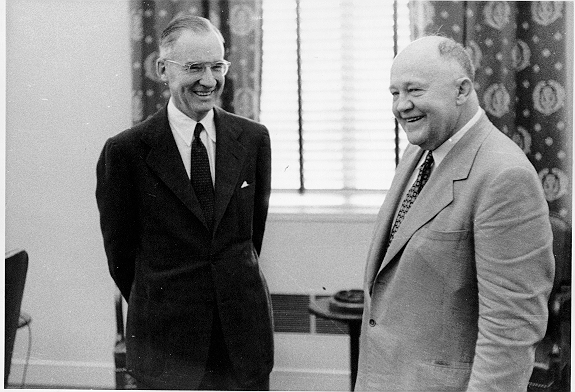
Ed Witte (right) laughs with Secretary of Health, Education and Welfare Marion Folsom in 1955. Photo courtesy of SSA History Archives
While the safety net program known as Social Security is an American public policy, its economic and social impacts have surely been felt beyond the United States’ borders.
Many economists and policymakers had a hand in the creation of the program, but UW–Madison economics scholar Edwin Witte is often credited as the “father” of Social Security.
Witte held various positions in state and federal government throughout his career, developing deep expertise in social insurance policy. Soon after becoming a full professor in UW–Madison’s economics department in 1933, Witte was tapped to lead President Franklin D. Roosevelt’s Committee on Economic Security, which was tasked with crafting the legislation that would eventually become the Social Security Act of 1935. At the committee’s helm, Witte became the legislation’s lead author.
After Roosevelt signed the legislation into law, Witte returned to teaching while continuing to serve on a federal advisory council on Social Security.
Today, Social Security has become a social safety net that provides monthly income for about one in five U.S. residents, or around 66 million people. While most beneficiaries are retirees, the program also provides benefits via Social Security Disability Insurance and to younger survivors of deceased recipients.
Social Security-related work also continues at UW through the Center for Financial Security, where researchers investigate the effects of various policies and economic shifts on beneficiaries of the program. The Center for Financial Security also partners with the Howard University Center on Race and Wealth to bring scholars from across the U.S. to UW–Madison for a week-long workshop to train and mentor emerging researchers.
Space-based astronomy
UW–Madison scientists also helped lay the foundation for satellite-based instruments pointed away from Earth and toward the vast cosmos.
Professor of Astronomy Arthur Code was a pioneer in the field of space astronomy, which uses telescopes based in orbit high above Earth to gain sharper views of the universe unimpeded by the planet’s atmosphere.
Code led a group of Wisconsin astronomers in building a suite of telescopes that in 1968 were launched aboard NASA’s Orbiting Astronomical Observatory 2, the first general purpose astronomical observatory in space and a forerunner to famed space telescopes like Hubble and James Webb Space Telescope.
Speaking of Hubble, Code and other UW–Madison astronomers went on to hold important roles in the famed observatory’s development. Among them were Robert Bless, who led development of one of the famous telescope’s original instruments — its High Speed Photometer.
Designed to measure the brightness of starlight, the HSP was one of the telescope’s only original instruments to work correctly after its launch in 1990. In fact, the HSP was crucial in helping NASA diagnose why its primary telescope didn’t initially work as intended. HSP was removed from Hubble just a few years after its launch to make room for a new set of instruments that corrected the telescope’s vision.
UW’s contributions to space-based astronomy continue to this day. In fact, an engineering alumnus, Wei-Di Cheng, helped design and test systems that ensured the James Webb Space Telescope would arrive in its orbit intact and ready for its science mission, and a number of UW–Madison scientists are involved in the ongoing mission.
Organ transplants
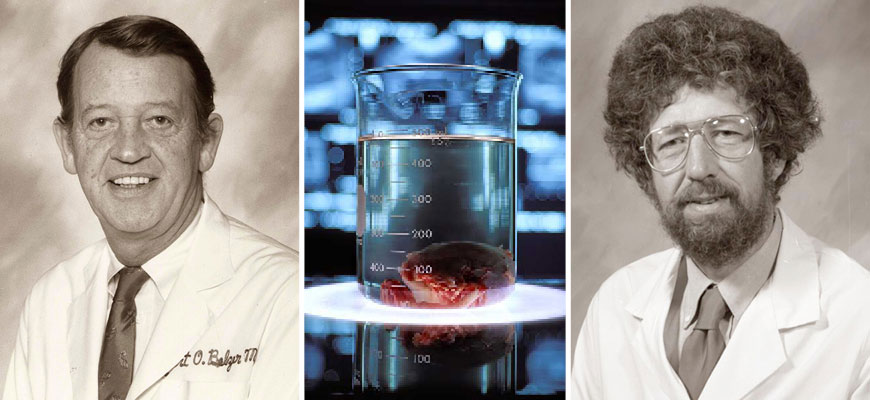
UW scientists Folkert Belzer, left, and James Southard, right, developed the gold standard for organ preservation techniques. Photos courtesy of WARF
For the last 30-plus years, organ transplant recipients around the world have benefited from a key development in transplant medicine made by UW–Madison researchers.
In the 1980s, transplant pioneer Folkert Belzer at the School of Medicine and Public Health and UW–Madison biochemist James Southard developed a liquid solution to better preserve pancreases as they awaited transplantation.
The solution, which has come to be known by several names, including UW Solution, entered clinical use in 1987. It was so effective that it quickly became a preferred method for preserving livers and kidneys and has been used to extend the viability of other organs too, including hearts.
While other solutions have been developed since then, UW Solution remains a go-to choice for organ preservation, especially after it was improved in the early 2000s to extend the shelf life of organs even longer. There aren’t reliable estimates for how many lives have been saved or organs preserved with UW Solution since it entered clinical use, but during the first four years of use it preserved hundreds of organs that were subsequently transplanted.
Stem cells
UW Solution helps keep donated organs viable, but someday in the future there may be less need for it thanks to a landmark scientific discovery that occurred on the UW–Madison campus in 1998.
That’s when developmental biologist and UW professor James Thomson announced that his lab had for the first time isolated and cultivated human embryonic stem cells.
The discovery — dubbed the scientific “breakthrough” of the year by Science magazine — ushered in a new era in biology and spawned the whole new scientific field of regenerative medicine. That’s because the cells are immortal and can be manipulated to turn into hundreds of other cell types that make up the human body.
Thomson’s discovery precipitated thorny ethical and policy debates in their time but human embryonic stem cells have proven to be useful models for studying basic biology and disease processes and treatments. The cells have themselves shown promise for treating neurological conditions and other diseases and for growing healthy new tissue or even possibly whole organs for transplantation.
Thompson’s pathbreaking work also led to the discovery of induced pluripotent stem cells, which can be created from adult cells taken from nearly anywhere in the body, such as skin. It’s also led to the founding of many national and international companies and fueled clinical trials across the world.
Today, researchers affiliated with the UW Stem Cell and Regenerative Medicine Center use stem cells from multiple sources to investigate basic biology and a number of cardiovascular, musculoskeletal, blood and neurodegenerative conditions, as well as treatments.
For example, UW–Madison neuroscientist Su-Chun Zhang and Marina Emborg, a professor of medical physics and research at the Wisconsin National Primate Research Center, are working with induced pluripotent stem cells to development treatments for Parkinson’s Disease.
Subscribe to Wisconsin Ideas
Want more stories of the Wisconsin Idea in action? Sign-up for our monthly e-newsletter highlighting how Badgers are taking their education and research beyond the boundaries of the classroom to improve lives.

